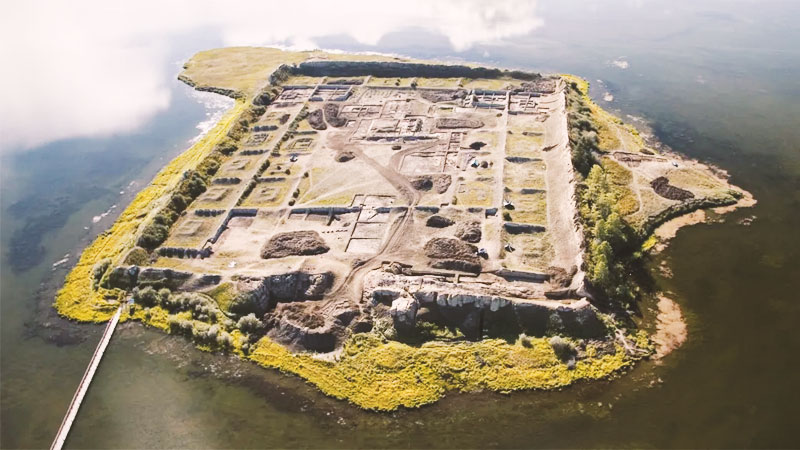
Ancient ruins located on a small island in Siberia have intrigued researchers for years, but now archaeologists believe they have unraveled the mysteries of the enigmatic construction.
Known as Por-Bajin, which translates as “mud house,” the complex consists of 12-meter-high mud walls that occupies an area of 215 by 162 meters.
Por-Bajin was built on a small island in a lake in the mountains of southern Tuva, near the border between Russia and Mongolia, by a group of nomadic Uyghures, a Turkic ethnic group native to the Uyghur region of Xinjiang in northwest China.
Researchers only knew that the complex had been built sometime in the 8th century, but they never discovered the purpose of its construction or why the building was apparently abandoned without ever being occupied.
Using carbon-14 dating, scientists at the University of Groningen in the Netherlands and the Russian Academy of Sciences have begun to have some answers.
“When you find wood at an archaeological site from that period, you can measure the carbon-14 content of subsequent tree rings,” explained Margot Kuitems, study author and researcher at the Center for Isotope Research at the University of Groningen.
When using the technique to analyze wood used in construction, researchers discovered that it was built around 777 AD.
That year, the Tengri leader Bögü Khan converted the Uyghur Khaganate to a now-extinct religion known as Manichaeism.
By that date, scientists assume that the building was built to be a monastery of this Gnostic religion and as Bögü Khan was killed during a rebellion against Manichaeism in 779 AD, the complex was abandoned without ever being used.


















